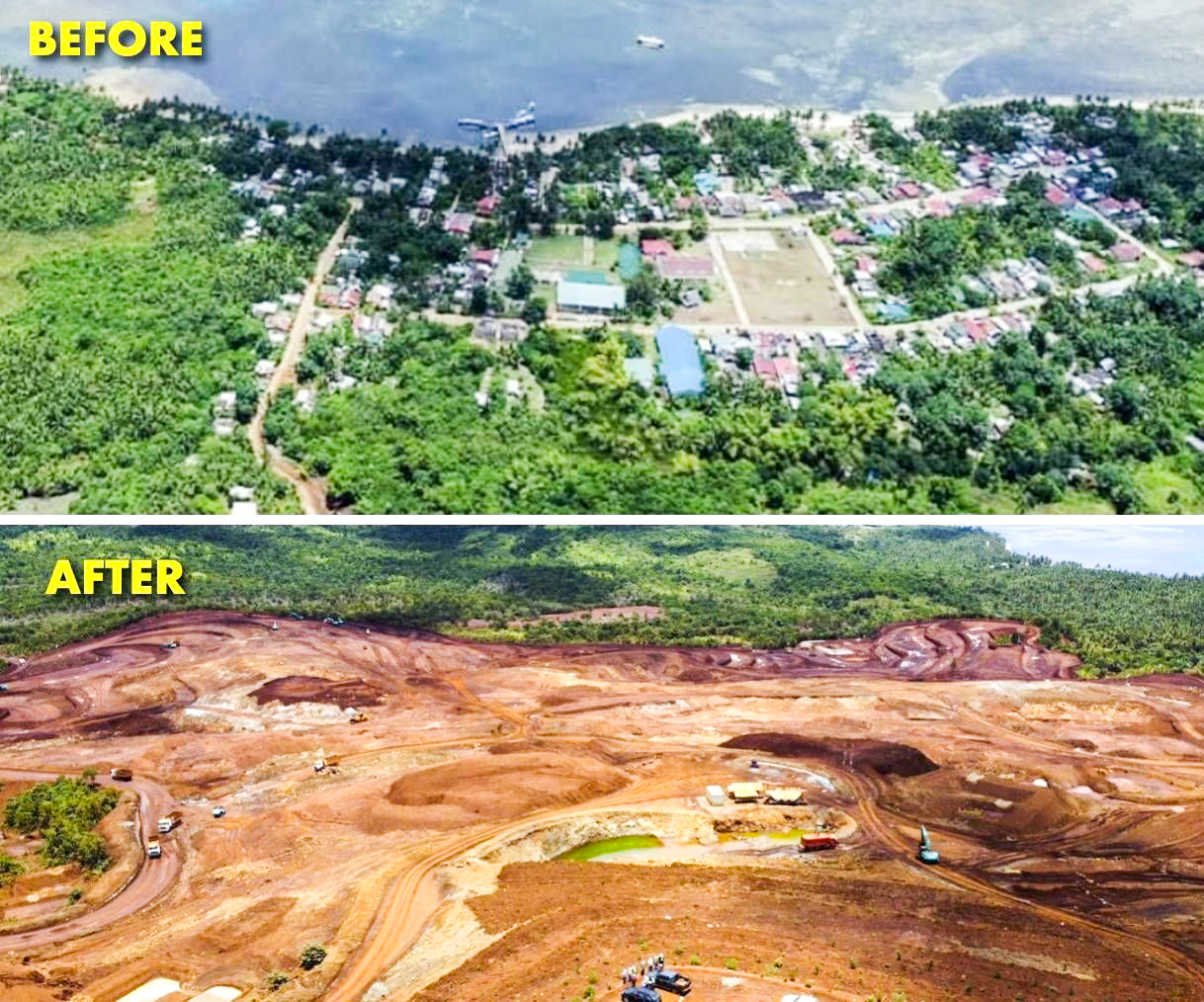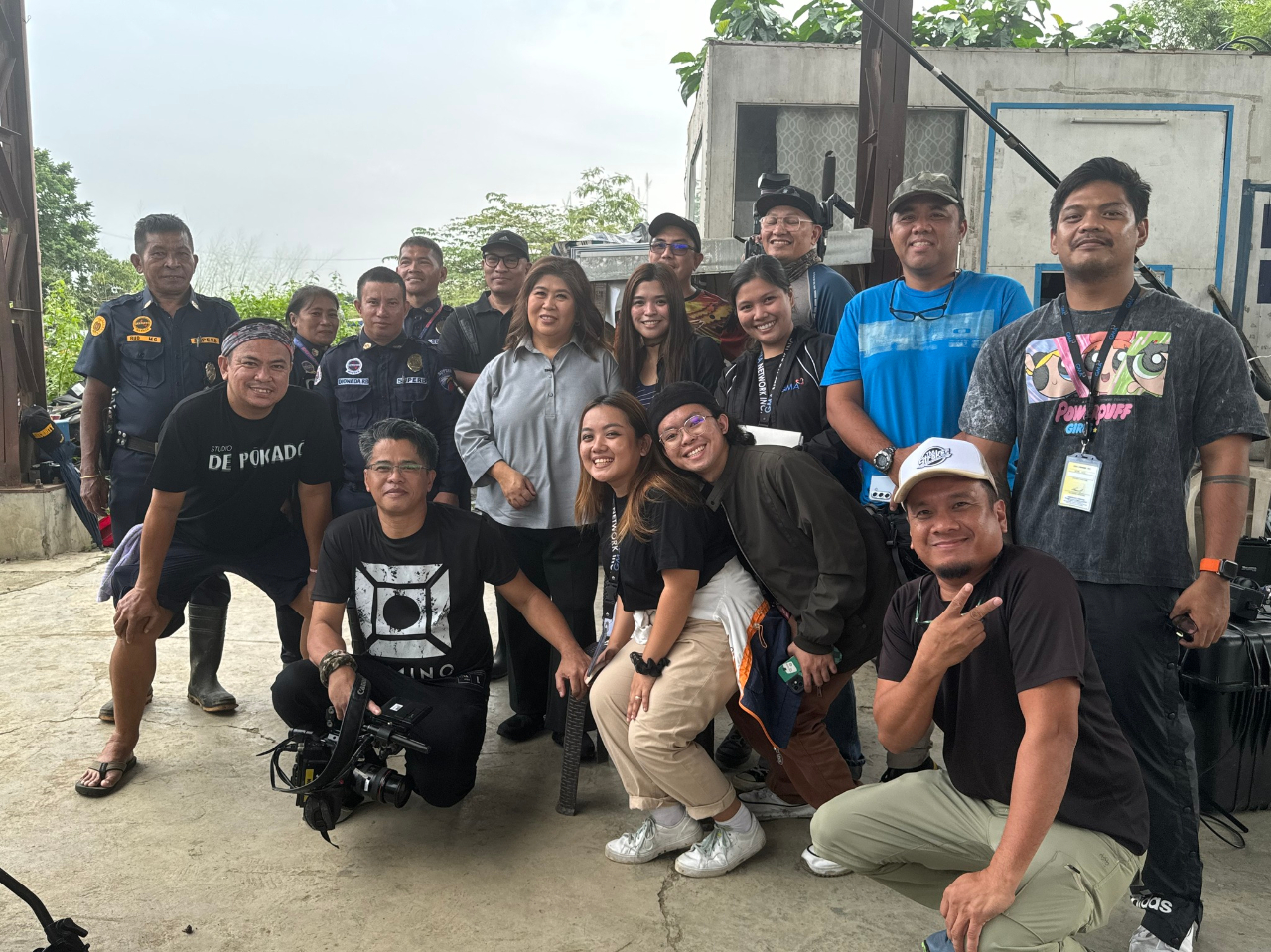Now celebrating two decades on air, "Kapuso Mo, Jessica Soho" (KMJS) has become a household name, renowned for capturing the full spectrum of the Filipino experience. With over 26 billion views across social media platforms, "KMJS" continues to thrive. At its heart is Jessica Soho’s dedication to telling impactful stories that matter and have the power to change lives.
As a seasoned broadcast journalist, Soho has covered extraordinary stories and major global events, often placing herself in dangerous situations to deliver the truth with accuracy and empathy. Her unwavering commitment to the craft has seen her report from conflict zones, document the aftermath of natural disasters, and face personal risks that would deter many.

Soho recalls one experience from the late 1980s when she was on a small Air Force plane en route to the Spratly Islands. The aircraft suddenly began running out of fuel mid-flight.
“We thought we were going to crash land sa dagat. That time wala pang mga satellite phones, wala pang communication or equipment masyado between the aircraft and the ground, so sa Manila, they thought that we crashed,” she shared.
[“We thought we were going to crash into the sea. Back then, there were no satellite phones or reliable communication equipment between the aircraft and the ground. In Manila, they thought we had crashed.”]
She also narrowly escaped a landmine explosion while covering the conflict in Afghanistan. Reflecting on such moments, she admits that recalling them brings back the terror of those experiences.
“Pero syempre those stand out because I survived all of that. But at the same time, nakakatakot din isipin kasi I don't think may awareness na no’n ng mga PTSD eh. Tsaka wala namang mga briefing-briefing noong araw.”
[“Of course, those moments stand out because I survived them. But it’s also frightening to think about. There wasn’t much awareness of PTSD back then, and we didn’t have briefings like we do now.”]
Despite these life-threatening experiences, the stories that resonate most deeply with Soho are the narratives that leave a lasting impact– the ones centered on family and human connection, embodying the very essence of what it means to be Filipino.
Nothing makes Soho's heart sing more than the stirring family reunions she has helped orchestrate. Stories like the poignant baby swaps, where families are reunited after months of searching, highlight the deep significance of love, identity, and connection.
For Soho, bringing loved ones back together after being separated by time and circumstance is unmatched in its fulfillment.

A case of baby switching that 'KMJS' resolved in 2021.
The first time she did such a story was for “Jessica Soho Reports”. Faced with the challenge of producing a compelling segment, she suggested to her producer, Leo Sanchez, to feature a lost person.
To their surprise, as the episode aired, they began receiving calls from viewers claiming they recognized the missing child.
This unexpected response sparked the idea for a new program, “Sana’y Muling Makapiling,” which eventually became “Reunions.”
The show continued helping lost family members find their way back to each other– a mission carried over to “KMJS.”
Almost every week, Soho and her team would receive emails from viewers seeking help to locate missing loved ones. It saddens her to think that many Filipinos, who are big on families, are separated from their loved ones.
“It's a blessing and a privilege to be able to tell these kinds of stories. But at the same time, instrumento lang kami. Instrumento lang ang programa ng Panginoon. I believe there's God who makes everything possible. Siya ang nag-ga-guide sa amin para ma-i-connect namin ‘yung mga pamilya na naghahanapan,” Soho shared.
[“It’s a blessing and a privilege to be able to tell these kinds of stories. But at the same time, we are just instruments. The program is simply a tool of God. I believe there’s a divine hand guiding us to connect families who are searching for each other.”]
Kapuso Mo, Jessica Soho: Ang pag-uwi ni Jojo
Despite the outpouring of gratitude she receives, Soho acknowledges that none of these heartwarming reunions would have been possible without the unwavering support of “KMJS” viewers.
Through a powerful collaboration between the Kapuso show and its audience, a deep sense of empathy and collective action has emerged, allowing stories of hope and healing stories to transcend the screen.
For the award-winning journalist, this is a testament to the greater heights the community can achieve when it comes together.
“Nakikita mo talaga ‘yung innate na kabutihan natin as people. Maraming mali, maraming problema, pero naniniwala akong mabait talaga tayong mga tao. Of course, merong mga exceptions may mga gumagawa rin ng ‘di tama pero generally speaking, naniniwala ako mabuti ang mga tao,” she said.
[“You truly see the innate kindness in people. There may be problems and mistakes, but I believe that, at our core, we are good people. Of course, there are exceptions, but generally speaking, I have faith in the goodness of humanity.”]
Soho likens this spirit of community and bayanihan to the renowned Filipino hospitality that foreigners frequently praise.
“Merong something sa mga kalooban natin, sa mga kamay natin. Maalaga tayong mga tao kaya paborito tayong mga nurse, paborito tayong mga helper sa kani-kanilang mga bahay ng mga banyaga in many parts of the world kasi mabubuti tayo talaga. Nakikita ko ‘yan,” she said.
[“There’s something about our hearts and our hands. We are naturally caring people, which is why Filipino nurses and helpers are so well-loved in many parts of the world. I see that kindness in our people.”]
Beyond her dangerous news reports and emotional reunions, Soho has consistently tackled complex stories that highlight the struggles of ordinary Filipinos.
Her journey to Homonhon Island earlier this year is a powerful example, where she delved into the effects of mining operations on the local community—showcasing her commitment to unbiased reporting and giving voice to marginalized communities.
She visited Homonhon, located in the province of Eastern Samar, after residents expressed their concern and worries that their island may be in danger of being erased from the map as mining activities in the mineral-rich land continue.

Homonhon Island, before and after.
To reach the place, she and the team took a three-hour boat ride and had to walk a dusty distance, so they could finish the full report in just one day.
“‘Yung Homonhon, ang hirap kasing i-weigh. Gusto kong magalit kasi nakita ko ‘yung destruction ng kalikasan sa Homonhon because of the mining, pero as a journalist, kailangan ko ring pakinggan ‘yung kabilang side na sinubukan din naming gawin through our story na ‘yung mining companies give them livelihood, binibigyan sila ng trabaho,” she said.
[“It was hard to weigh the situation in Homonhon. I wanted to be angry seeing the environmental destruction caused by mining. But as a journalist, I also had to listen to the other side, which we tried to reflect in our story—that mining companies provide livelihoods and jobs.”]
However, witnessing the poverty still plaguing the island’s residents despite the supposed economic benefits from mining left Soho frustrated. “At saka nakikita na rin natin ‘yung destruction ng ating environment at kung anong epekto nito,” she said, acknowledging the long-term damage being inflicted on both the community and the environment.
[“We could see the destruction caused by the mining to our environment.”]
“We can’t just say that the world is broken and leave it be. If the world is broken, let’s fix it.”
—Jessica Soho
The experience on Homonhon Island strengthened Soho’s resolve to highlight the issues of environmental exploitation and amplify the voices of those most affected. It ignited a greater sense of responsibility in her reporting, aiming to foster discussions that might lead to meaningful change.
“‘Yung mga gano’ng istorya, gusto kong mas makagawa sana kami ng mga gano’n para maipakita na ito tayo, ito ‘yung mga naging problema, ito ‘yung mga susuungin pa nating problema. Kailangan nating kumilos, kailangan nating magkaroon ng resolve,” she emphasized.
[“Stories like these are what I hope we can continue to tell—to show who we are, the problems we have faced, and those we are still going to face. We need to act; we need to find resolve.”]
Yet, she remains realistic, acknowledging the limits of what journalists can accomplish on their own.
“Siguro hindi rin naman ako o kami o tayo nagkukulang sa pagpapaalala sa ganitong mga issue, pero iniisip ko pa rin saan kaya papunta ‘tong lahat ng ito? May mga ganyan ako kasi alam ko rin na ang dami pa ring minimina, ang dami pa ring maliliit na isla na nasisira dahil may minahan, pero ang laking ambag din ng mining sa ating ekonomiya.”
[“Maybe it’s not that I, or we as journalists, are lacking in our efforts to bring attention to these issues. But I still wonder—where is all of this heading? I think about that often because I know there are still so many mining activities and small islands being destroyed by it. But we cannot discount what it also does for the economy.”]
This inner conflict between economic development and environmental preservation is something Soho continues to grapple with.
“‘Yung pera na nakukuha ng gobyerno sa mina, paano iyon? Paano ‘yon papalitan? Parang ang gusto ko sana, mapag-usapan dahil naipakita ng aming programa, naiipakita ng ‘KMJS’ ‘yung problema, ‘yung nangyayari,” she said.
[“The government generates money from mining. How do we replace that? It’s something I want us to discuss. Through our program, 'KMJS,' we try to bring these issues to light and show what’s really happening on the ground.”]
Mga taga-Homonhon, nangangamba para sa kanilang lugar dahil sa pagmimina?! | Kapuso Mo, Jessica Soho
Soho continues to hope that “KMJS” will carry on being a vital platform for discussing complex issues, educating viewers and inspiring meaningful conversations about finding a sustainable balance between development and environmental responsibility.
“Ang ‘KMJS,’ para siyang anything and everything, so tumutulong, nagmumulat sa kaisipan ng aming viewers at ng aming followers, nagpapasaya kasi merong mga masasayang kwento. Gusto kong isipin ‘yung ‘KMJS’ is some sort of striking a balance para maipakita ‘yung mga dapat may pakita, and it would elicite the right response to issues, to problems, at the same time ma-inspire din tayo.”
[“‘KMJS’ is like anything and everything; it helps, it raises awareness, it opens the minds of our viewers. It also brings joy because we share uplifting stories. I’d like to think that ‘KMJS’ strikes a balance by presenting the issues that need attention and eliciting the right responses, while also inspiring us all.”]
While “KMJS” is known for its balance of news, human interest stories, and entertainment, one segment stands out for its unique appeal that keeps fans glued to their screens every Halloween night: the annual Gabi ng Lagim Halloween Special.
This much-anticipated tradition has captivated audiences with spine-chilling tales. The special features eerie paranormal stories, urban legends, and haunted locations, often rooted in Philippine mythology and real-life experiences. Each episode is crafted with atmospheric visuals, dramatic reenactments, and an immersive narrative style that keeps viewers on the edge of their seats.
To add depth to the stories, “KMJS” brings in experts such as paranormal investigators, psychologists, and cultural historians, who offer insights and tips on how to handle supernatural encounters. In the latest Gabi ng Lagim episode, the show explored an allegedly haunted car impounding area in Tumana, Marikina, where abandoned vehicles are said to harbor restless spirits.
Gabi ng Lagim XII - Michael Christian Cardoz' Misteryo sa Impounding Area | Kapuso Mo, Jessica Soho
Despite the overwhelming popularity of this segment, Soho has a surprising confession: she’s not actually a fan of horror.
“I’m not really a fan of the genre. Alam nila ‘yan. Ayoko ng mga katatakutan pero tinatanggap ko ‘yung bagong storytelling styles or techniques na gusto ng staff because they’re young and they’re very creative, gusto nila ng mga horror genre,” she admitted.
[“I’m not really a fan of the genre. They know that about me. I don’t like scary things, but I embrace the new storytelling techniques that my young and creative staff love to explore—especially their fascination with the horror genre.”]
Soho shares that she gets concerned about the safety of her crew, particularly when they visit notoriously haunted locations. She often worries about the possibility of someone getting possessed or followed by an evil spirit. To ease her worries, the team reassures her by performing cleansing rituals before and after shoots.
Even though horror isn’t her favorite, Soho continues to support the segment, appreciating its special place in the hearts of KMJS fans and recognizing the creativity it inspires in her team.


The 'KMJS' team working on 'Gabi ng Lagim XII.'
In its remarkable 20-year journey, “KMJS” has evolved alongside the changing landscape of journalism. From the early days of conventional reporting, when Soho had to physically transport video tapes from Visayas to Luzon, to today’s rapid digital era of file-sharing and instant uploads, the show has adapted while staying true to its core mission.
For Soho, the essence of journalism hasn’t changed despite the transformation in tools and platforms. At its heart, it remains a calling—a commitment to speak for the voiceless, shed light on issues, and reflect the essence of Filipino life. Her guiding mantra is simple yet powerful: “Keep going.”
“Hindi naman puwede na sabihin na the world is broken, ganun na ‘yun kalala. The world is broken, let's fix it,” she shared.
[“We can’t just say that the world is broken and leave it be. If the world is broken, let’s fix it.”]
Soho continued, “May ganun akong ilusyon minsan. Inuuto ko ‘yung sarili ko, binubudol ko ‘yung sarili ko na baka nga, even at a time na nakaka-dishearten ‘yung mga nangyayari sa mundo and nakaka-dishearten pati ‘yung the way journalists and journalism is being treated by some sectors of society, pero misyon ito eh.”
[“That’s what I tell myself. I convince myself that maybe, despite how disheartening the events in the world are, and even how disheartening it is to see the way journalists and journalism are treated by some sectors of society—it’s still a mission.”]
“We cannot play dead. Nilagay tayo dito for a purpose, for a mission.”
[“We are here for a purpose– for a mission.”]

A baby switching story that 'KMJS' tackled this 2024.
With this unwavering sense of purpose, Soho vows to continue utilizing her platform to make a meaningful impact, whether it’s through a spine-chilling “Gabi ng Lagim” special or a hard-hitting investigative piece like her deep dive into the plight of Homonhon residents. Each episode of “KMJS” is an opportunity to connect with people, amplify their voices, and inspire societal change.
Two decades since its first broadcast, “KMJS” has become a staple in Filipino households. Yet, the core of its existence remains the same: Soho’s dedication to her mission, carried out with compassion and integrity.
“Hangga't may mga buhay na kailangang tulungan, kailangang bigyan ng inspirasyon, kailangang mabago, andito pa rin tayo. Alam ko masyadong big deal ‘yun. Parang it sounds like an illusion, pero kailangang gawin,” she said.
[“As long as there are lives that need help, inspiration, or change, we will still be here. I know that sounds like a big deal. It may almost seem like an illusion, but it’s something we have to do.”]

Jessica Soho in Homonhon Island.
For Soho, stories are the lifeblood of connection.
“Importante ang mga kuwento. Sabi nga nila 'di ba? One of the most powerful things in the whole world are stories. Stories are powerful, stories are us. We need to tell the stories.”
[“Stories are important. As they say, right? One of the most powerful things in the world are stories. Stories are powerful, stories are us. We need to tell the stories.”] —JCB, GMA Integrated News

In-depth special reports and features showcasing the best multimedia storytelling from GMA Integrated News.